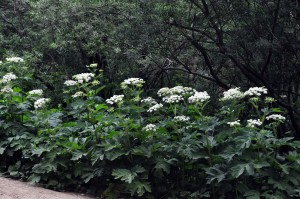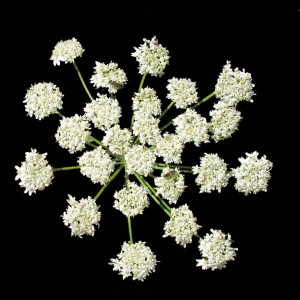Looking ahead to a summer vacation Louise and I decided to visit Greer – a small town in the White Mountains of Arizona. The Little Colorado River runs through Greer, eventually ending up at the Grand Canyon. There it is just a stream, bordered with a wealth of flowers, many of them new to me.
As we were leaving Greer Louise and I decided to walk the Butler Nature Trail. It is a short walk, just about a mile long. For the first half mile it climbs up to a spring where we were able to fill our water bottles. I noticed on the walk that even though I walked slowly, finding the up-hill slope a bit of a challenge, Louise was walking even more slowly behind me. From time to time I would stop to rest as she caught up with me. When we were at the Spring she made a watershed statement. “This is my last hike. I am almost 87 years old and it is just getting too hard for me.” I admit to being a little stunned, but also pleased to have her make what must have been a difficult decision.
When we moved to Arizona in 1982, we were not hikers. This is something we came to do and love over the many years since then. We have walked hundreds of miles together, enjoying some of the most beautiful scenery in the world. It has been one of the most satisfying and worthwhile forms of exercise we have ever had. For me it has also been a great opportunity to take pictures of scenery for painting watercolors, and of plants for my nature books.
In 2000, Louise and her sister Ann, decided they would like to hike the Grand Canyon rim to rim in one day! I thought it was a daunting challenge and one I was willing to support. Louise and I began training for the big walk, including climbing Mount Wrightson, walking down to Tucson from Mt. Lemmon (about 15 miles), taking long hikes in the Rincon Mountains, and generally doing all we could do to condition ourselves for the big event. Louise bought new boots three months before, to make sure they were well worn in before the big hike.
On October 2, 2001, when Louise was 72 and I had just turned 74, we accomplished the dream. There were 8 people in our party, plus Louise’s brother Jim and sister Fran who provided transportation. Our youngest son, Owen, was also with us. We began the hike at 6 am in the ice at the North Rim of the Grand canyon, and Louise and I were the last to arrived at the South Rim 17 hours later. We had no sore muscles or blisters after that twenty-four mile walk.
In the years since then we have enjoyed many more hikes. But this one-mile hike in Greer was to be the last one. We paused to reflect on this change in our lives, and then continued the walk down hill back to the car. Somewhere along the way Louise called to me – “Look at this!” I turned around and saw her pointing to her left hiking boot, with the sole flapping down like some prehistoric jaw. I reassured her that she could still walk on the boot, since it was ruined anyway. In only about 15 minutes we were back at the car. When she took off her boots she noticed that the right boot was also losing its sole, but this one was peeling off from the back, not the front.
We could not help remarking on the proximity of the two events – the announcement that this was her last hike, and the boots giving out. “They must have heard me” was all she said. They had given her fifteen years of amazing and faithful service. As she put them in the trunk she felt a mixture of relief and sadness. A truly wonderful era in our life was coming to an end. .
Louise will continue to walk in the neighborhood for exercise, and I will continue to hike in the mountains, though I must admit that I am slowing down.

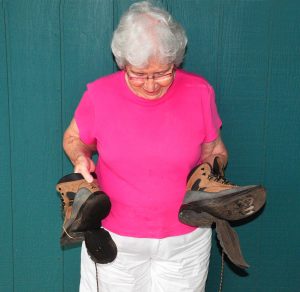
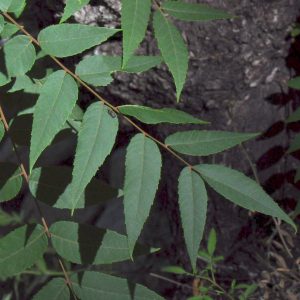 Walnut leaves
Walnut leaves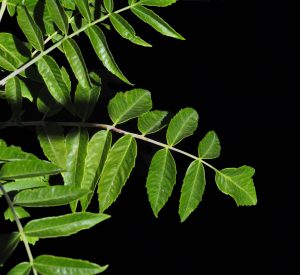 Sumac leaves
Sumac leaves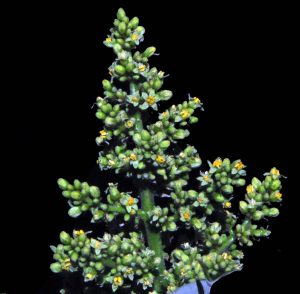 Sumac flower cluster
Sumac flower cluster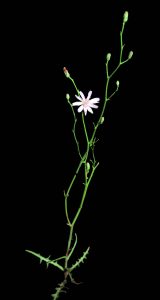 Mystery plant
Mystery plant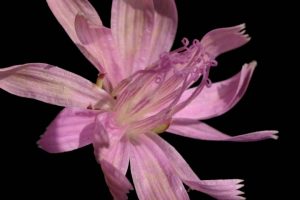 Mystery plant close up
Mystery plant close up “Fall Leaves” – One of the paintings in the article:
“Fall Leaves” – One of the paintings in the article: 
